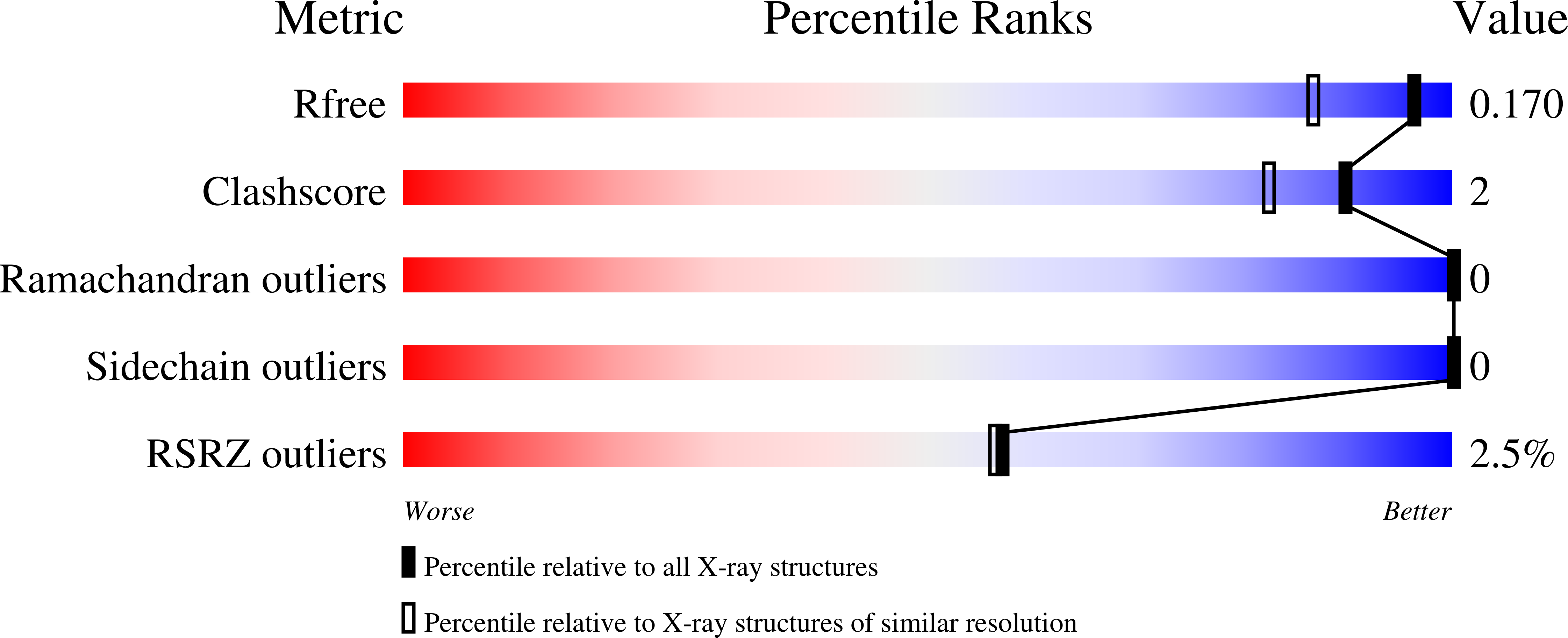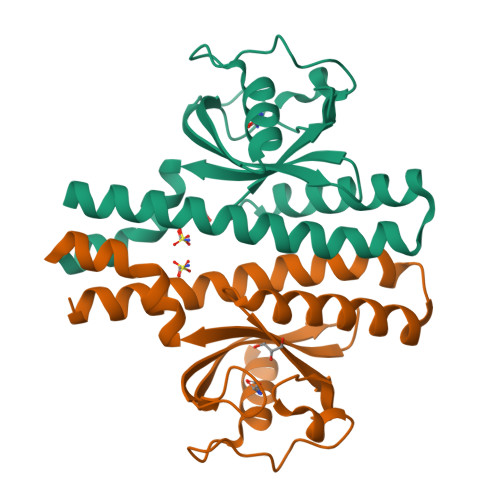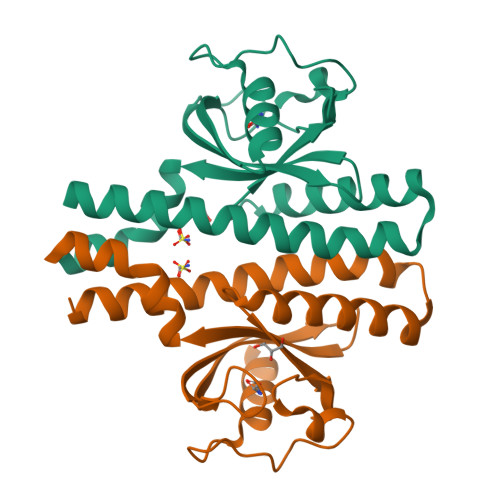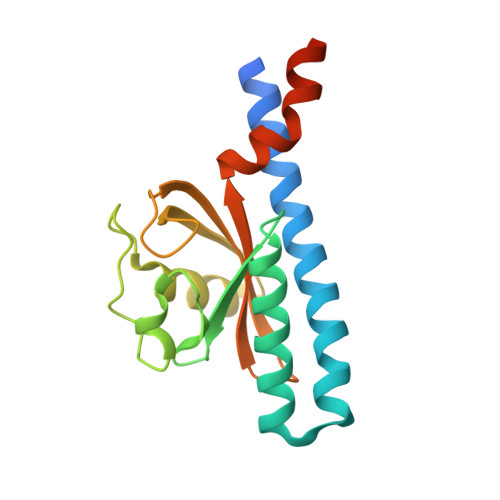Structure and proposed mechanism for the pH-sensing Helicobacter pylori chemoreceptor TlpB.
Goers Sweeney, E., Henderson, J.N., Goers, J., Wreden, C., Hicks, K.G., Foster, J.K., Parthasarathy, R., Remington, S.J., Guillemin, K.(2012) Structure 20: 1177-1188
- PubMed: 22705207
- DOI: https://doi.org/10.1016/j.str.2012.04.021
- Primary Citation of Related Structures:
3UB6, 3UB7, 3UB8, 3UB9, 4EXO - PubMed Abstract:
pH sensing is crucial for survival of most organisms, yet the molecular basis of such sensing is poorly understood. Here, we present an atomic resolution structure of the periplasmic portion of the acid-sensing chemoreceptor, TlpB, from the gastric pathogen Helicobacter pylori. The structure reveals a universal signaling fold, a PAS domain, with a molecule of urea bound with high affinity. Through biophysical, biochemical, and in vivo mutagenesis studies, we show that urea and the urea-binding site residues play critical roles in the ability of H. pylori to sense acid. Our signaling model predicts that protonation events at Asp114, affected by changes in pH, dictate the stability of TlpB through urea binding.
Organizational Affiliation:
Institute of Molecular Biology, University of Oregon, Eugene, OR 97403, USA.



















